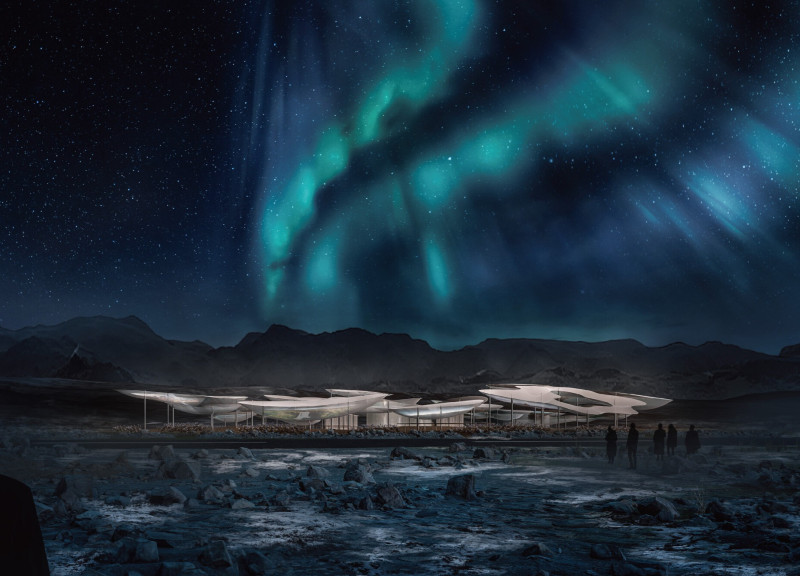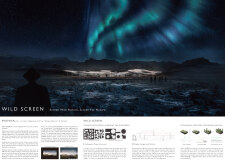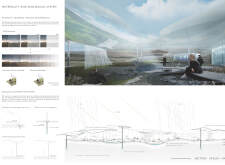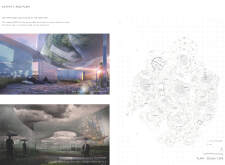5 key facts about this project
WILD SCREEN is an architectural design located in the diverse landscapes of Iceland. It functions as an open cinema that merges the experience of watching films with the surrounding natural environment. By doing so, it provides an opportunity for viewers to engage not only with the stories depicted on screen but also with the unique characteristics of Icelandic nature. The design moves away from traditional cinema models, creating a space where film and the outdoors interact and enhance one another.
Cinematic and Ecological Integration
The concept of WILD SCREEN focuses on connecting the cinematic experience with ecological considerations. Visitors are encouraged to immerse themselves in both the narratives of Icelandic films and the beauty of the natural setting. This design approach promotes an engaging environment, where film-viewing becomes an active interaction with the landscape. At the same time, the project addresses environmental issues like soil erosion and loss of plant life. It incorporates strategies to restore the local ecosystem, contributing to ecological health.
Materiality and Structure
WILD SCREEN uses two layers of inflated ETFE (Ethylene Tetrafluoroethylene) to create a dynamic environment. This material allows light to pass through in varying degrees, which enhances the relationship between the inside space and the natural surroundings. The structure has a simple geometric form that helps to blur the boundaries between indoor and outdoor experiences. Visitors can enjoy a continuous view of the landscape, making the cinema feel connected to its environment.
Visitor Interaction and Experience
The design offers flexibility in how visitors can engage with films, allowing them to choose to stand, sit, or lie down. This variety encourages a more active and personal experience. Changes in weather also impact how the space feels, allowing natural elements to become part of the viewing atmosphere. Thus, the cinema acts not only as a place for films but also fosters a deeper appreciation for the landscape.
WILD SCREEN also focuses on ecological recovery, using its design to improve soil conditions and promote plant diversity. This emphasis on sustainability highlights a commitment to creating spaces that benefit both culture and nature. The project aims to showcase how architecture can play a role in environmental restoration, demonstrating that buildings can contribute positively to the ecosystems they inhabit.
As visitors enter WILD SCREEN, they find a space where the lines between film and the environment blend together. The design invites people to experience Icelandic nature and film narratives simultaneously, creating a unique and engaging viewing experience.


























